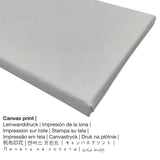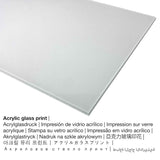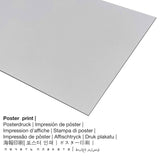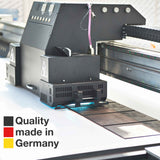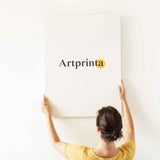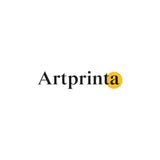Alexander Helwig Wyant, 1880 - Ala nwoke ọ bụla - mbipụta nka mara mma
Ụtụ gụnyere. Mbupu gbakọrọ na ndenye ọpụpụ.
Banyere ihe
The nkà nke oge a eserese akpọrọ Any Man's Land onye na-ese ihe sere ya Alexander Helwig Wyant in 1880. Ihe nka nwere nha: 18 3/16 x 30 inch (46,20 x 76,20 cm). Mmanụ na kwaaji was applied by the American painter as the medium of the piece of art. Today, this piece of art forms part of the digital collection of Los Angeles County Museum of Art, which is the largest art museum in the western United States, with a collection of more than 142.000 objects that illuminate 6.000 years of artistic expression across the globe. This work of art, which belongs to the ngalaba ọha is included with courtesy of Los Angeles County Museum of Art (www.lacma.org).The creditline of the artpiece is: . Further, the alignment is in landscape format with an aspect ratio of 16: 9, nke pụtara na ogologo bụ 78% ogologo karịa obosara.
Additional description from Los Angeles County Museum of Art website (© - Ụlọ ihe ngosi nka nke Los Angeles County - www.lacma.org)
Notes from the Curator: Eliot Clark referred to this landscape as "one of the most dramatic and powerful pictures painted by Wyant," expressive of "the unrelenting and irresistible force of nature." Wyant depicted a desolate land, devoid of any human presence, with only one tree sturdy enough to survive, and the painting was mistakenly referred to in 1912 as No Man’s Land. Storm clouds move quickly over the wild marshy land, solitary stream, and ragged rocks, which cast threatening, dark shadows. While Wyant was preoccupied with light, atmosphere, and weather, Any Man's Land is one of his stormiest landscapes. His earth-toned palette has become even more somber, and his colors--browns, yellow ochers, grays, dark greens, blacks, and white--serve as visual equivalents of nature's ominous mood. The loose brushwork in the artist's late paintings is usually attributed to the physical disability he suffered after his stroke. Any Man's Land, however, demonstrates that Wyant's late painterly handling was not a result of technical inability but was deliberately employed as an expressive element. The forceful strokes in the clouds and sky echo the movement of the threatening storm, and the vigorous scumbling of the rocks and distant terrain express the wildness of the land. Air and earth seem to merge as the wind whips through, and all becomes ethereal. So removed from strict representation had Wyant become that his art verged on abstraction. Wyant's brushwork and emphasis on mood rather than place would date this as a late work. The art historian Robert S. Olpin places it in the artist's last years, dating it about 1887-92. A painting with the same title was exhibited in the 1880 annual exhibition of the Society of American Artists, however, and the notices the exhibited landscape received in several newspaper reviews accord with the appearance of the museum's painting. Any Man's Land therefore was painted much earlier than previously considered and demonstrates that Wyant's turn toward a personal, abstract art began earlier than art historians previously thought.
Notes from the Contributor: Painting by Alexander Helwig Wyant (Museum: Los Angeles County Museum of Art)
Ozi nka ahaziri
| Aha nke ihe nka: | "Any Man's Land" |
| nhazi ọkwa: | sere |
| Category: | nkà nke oge a |
| Century: | 19th narị afọ |
| Emepụtara n'afọ: | 1880 |
| Afọ nka: | karịa afọ 140 |
| Ọkara nke ihe osise izizi: | mmanụ na kwaaji |
| Nha izizi: | 18 3/16 x 30 inch (46,20 x 76,20 cm) |
| Ụlọ ihe ngosi nka: | Ebe ngosi nka nke Los Angeles County |
| Ebe ebe ngosi nka: | Los Angeles, California, Njikota Obodo Amerika |
| Weebụsaịtị ihe ngosi nka: | Ebe ngosi nka nke Los Angeles County |
| Ụdị ikike nka: | ngalaba ọha |
| Site n'aka: | Ụlọ ihe ngosi nka nke Los Angeles County (www.lacma.org) |
Tebụl metadata omenkà
| Ihe nkiri: | Alexander Helwig Wyant |
| Aliases: | alexander wyant, wyant a.h., wyant alexander helwig, alexander h. wyant, Wyant, Wyant A., ויאנט אלכסנדר הלוויג, Wyant A. H., Wyant Alexander, A.H. WYANT, Wyant Alexander H., Alexander Helwig Wyant, Wyant Alexander Helwig |
| Gender: | nwoke |
| Obodo onye nka: | American |
| Ọrụ onye na-ese ihe: | onye na-ese ihe |
| Country: | United States |
| Nkewa onye nka: | omenkà nke oge a |
| Oge ndu: | 56 afọ |
| Afọ ọmụmụ: | 1836 |
| Obodo amụrụ: | Evans Creek, Tuscarawas county, Ohio, United States, ime obodo |
| Nwụrụ n'afọ: | 1892 |
| Obodo ọnwụ: | New York City, New York State, Njikota Obodo Amerika |
Nhọrọ akụrụngwa ngwaahịa gị
Anyị na-enye ụdị dị iche iche nha na ihe maka ngwaahịa ọ bụla. Họrọ n'ime nhọrọ ngwaahịa ndị a ugbu a ka ị kwekọọ na mmasị gị na nha na akụrụngwa:
- Bipụta akwụkwọ mmado n'ihe kwaaji: The Artprinta poster print is a UV printed flat cotton canvas paper with a fine surface structure, that reminds the actual work of art. Please bear in mind, that depending on the size of the canvas poster print we add a white margin of something between 2-6cm around the painting, which facilitates the framing with your custom frame.
- Aluminom ihe eji eme ihe: This is a metal print made on aluminium dibond with an outstanding depth. The Aluminium Dibond Print is the perfect introduction to the sophisticated world of fine art prints with aluminum. For the Direct Aluminium Dibond option, we print your chosen work of art on the aluminium composite surface. The bright parts of the original work of art shine with a silk gloss, however without any glow. The colors are luminous and vivid, the details of the print are very clear. The print on aluminium is the most popular entry-level product and is a sophisticated way to display art reproductions, because it draws attention on the replica of the artwork.
- Mbipụta enyo acrylic: The print on acrylic glass, often labelled as a fine art print on plexiglass, makes your favorite artwork into gorgeous home decoration and forms a great alternative option to canvas or aluminium dibond fine art replicas. The work of art will be custom-made with state-of-the-art UV direct printing machines. With an acrylic glass fine art print contrasts plus image details become more exposed because of the precise tonal gradation.
- Mbipụta kwaaji: The canvas print is a printed cotton canvas stretched on a wooden frame. The advantage of canvas prints is that they are relatively low in weight. That means, it is easy and straightforward to hang your Canvas print without the support of additional wall-mounts. Therefore, a canvas print is suited for all kinds of walls.
Ngwaahịa a
| Bipụta ụdị ngwaahịa: | mmepụta nka |
| Usoro mmeghari: | mmeputakwa n'ụdị dijitalụ |
| Produzọ mmepụta: | mbipụta dijitalụ |
| Mmalite ngwaahịa: | Germany |
| Ụdị ngwaahịa: | mmepụta ihe na-achọ |
| Ngwaahịa were: | mgbidi mgbidi, ime ụlọ |
| Nhazi nka nka: | nhazi odida obodo |
| Njikwa oyiyi: | 16: 9 |
| Nkọwa nke oke akụkụ: | ogologo bụ 78% ogologo karịa obosara |
| Ụdị ihe dị iche iche: | Mbipụta kwaaji, mbipụta enyo acrylic (nwere ezigbo mkpuchi iko), mbipụta ọla (aluminium dibond), mbipụta akwụkwọ mmado (akwụkwọ kwaaji) |
| Kanvas n'elu etiti ihe ndọtị (mbipụta akwa akwa): | 90x50cm - 35x20" |
| Mbipụta iko acrylic (nwere ezigbo mkpuchi iko) nhọrọ nha: | 90x50cm - 35x20" |
| Mpempe akwụkwọ mmado (akwụkwọ kwaaji) nha dị iche iche: | 90x50cm - 35x20" |
| Nhọrọ mbipụta aluminom: | 90x50cm - 35x20" |
| ụba: | mmeputakwa na-enweghị isi |
Nkwupụta iwu: We try the best we can to depict our products in as much detail as possible and to display them visually. Nevertheless, the tone of the printed materials, as well as the printing may diverge to a certain extent from the presentation on the screen. Depending on your screen settings and the condition of the surface, colors may not be printed as realisitcally as the digital version shown here. Bearing in mind that all the art prints are processed and printed manually, there might also be slight discrepancies in the motif's exact position and the size.
Copyright right, Artprinta (www.artprinta.com)


